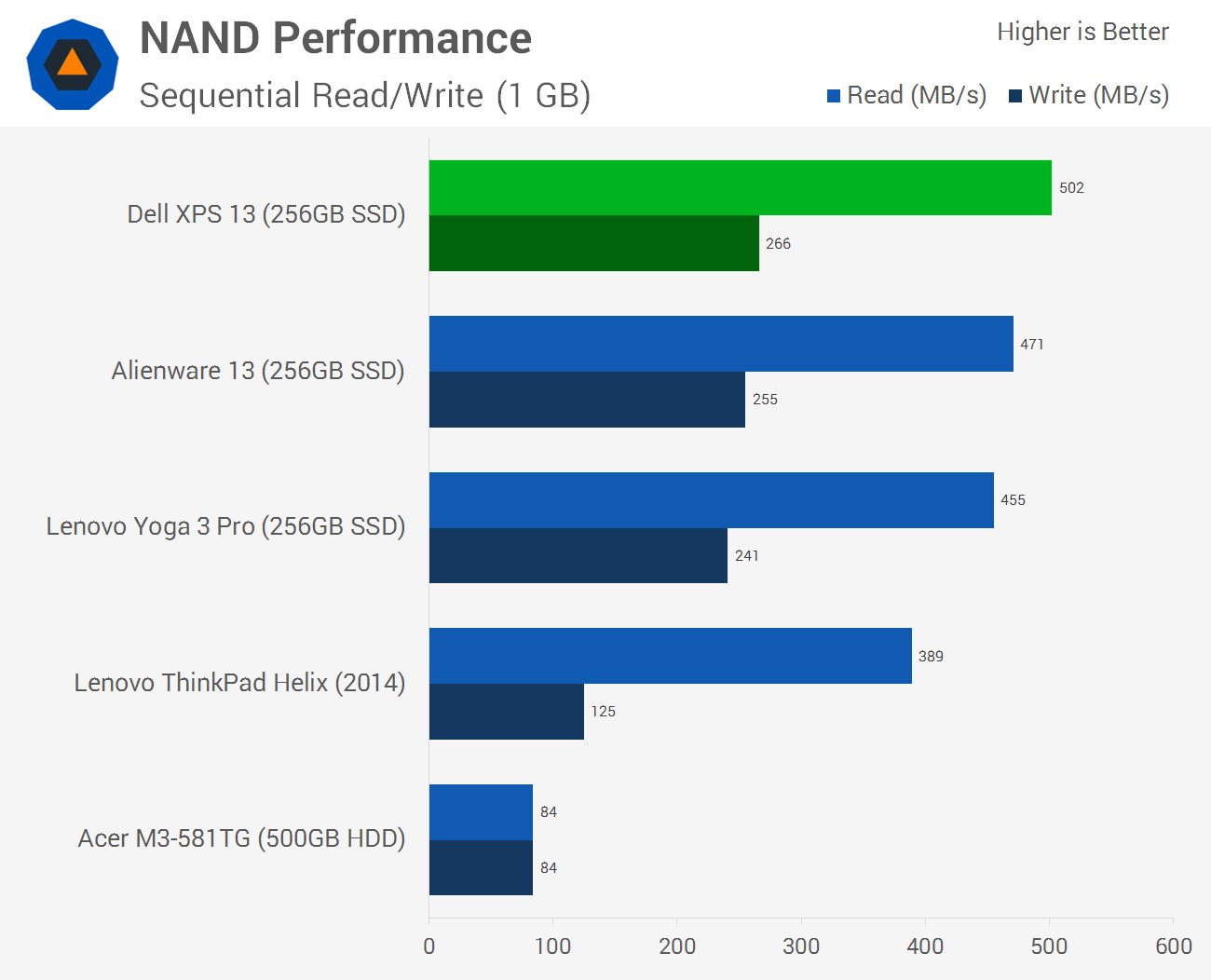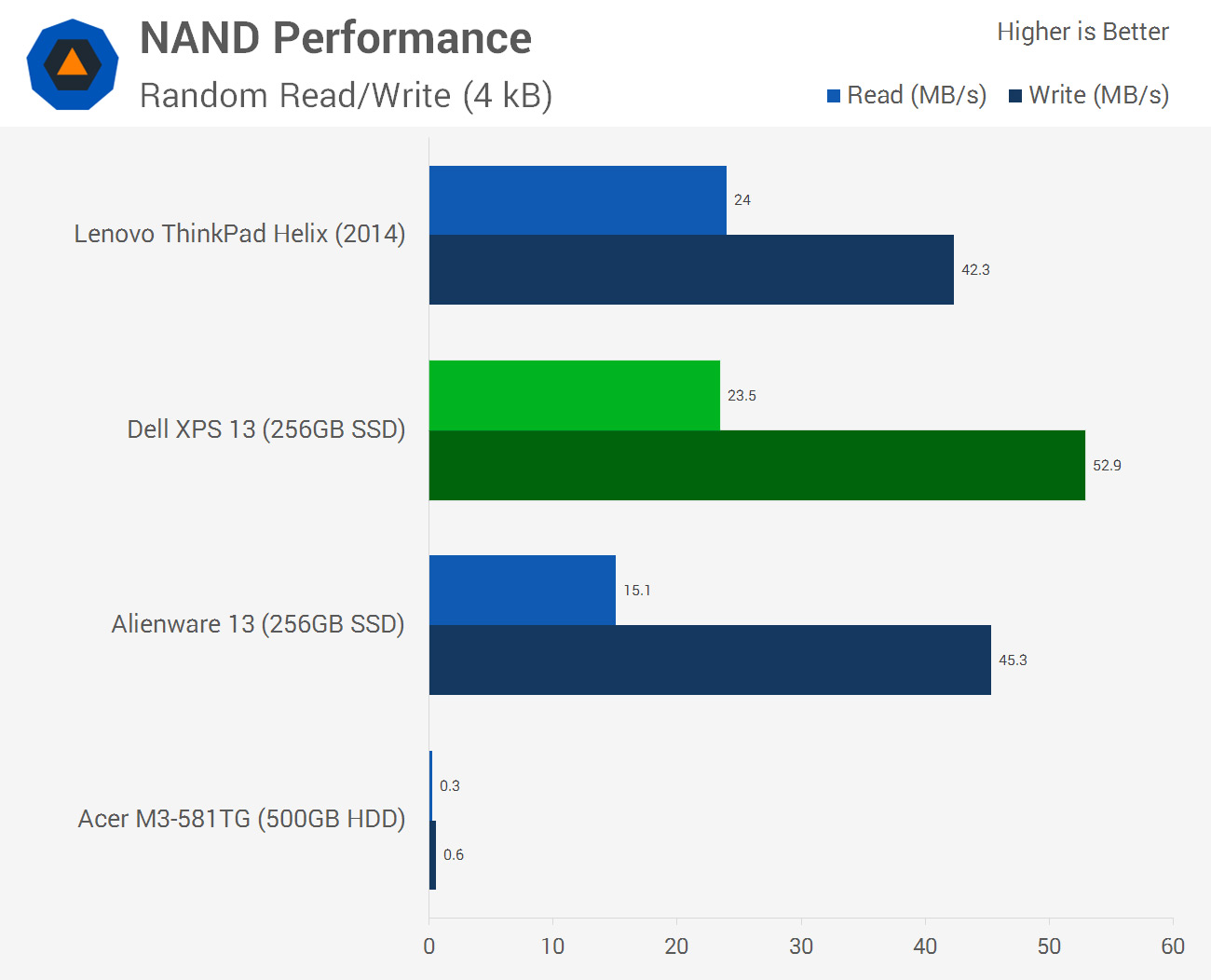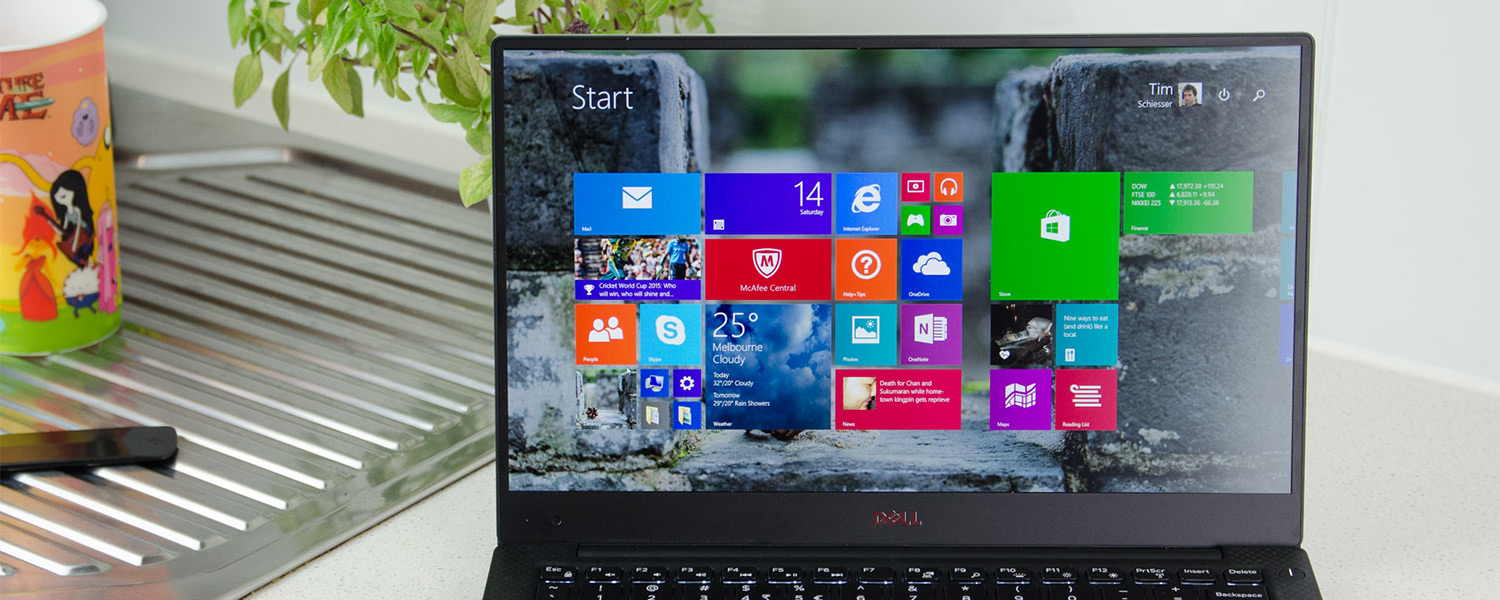GPU and Storage Performance
Now let's take a look at the performance of the HD Graphics 5500 GPU in the i5-5200U. As you'll note, we're comparing here to both the Core M's HD Graphics 5300 GPU, and the HD Graphics 4400 GPU in the Alienware 13 with its dedicated GPU disabled. In some charts I've thrown in dedicated GPUs just to give you an idea of how far behind integrated GPUs are.
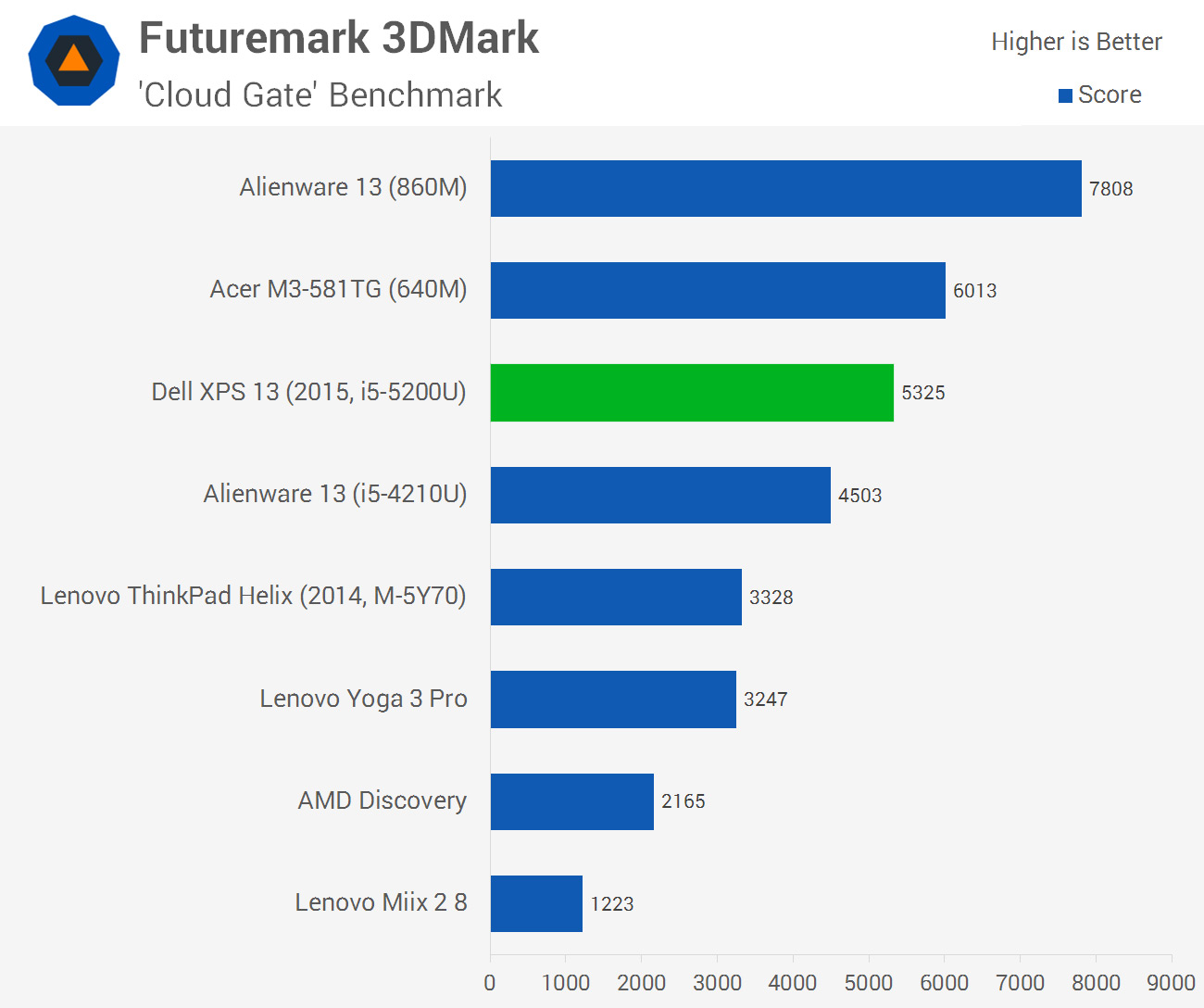
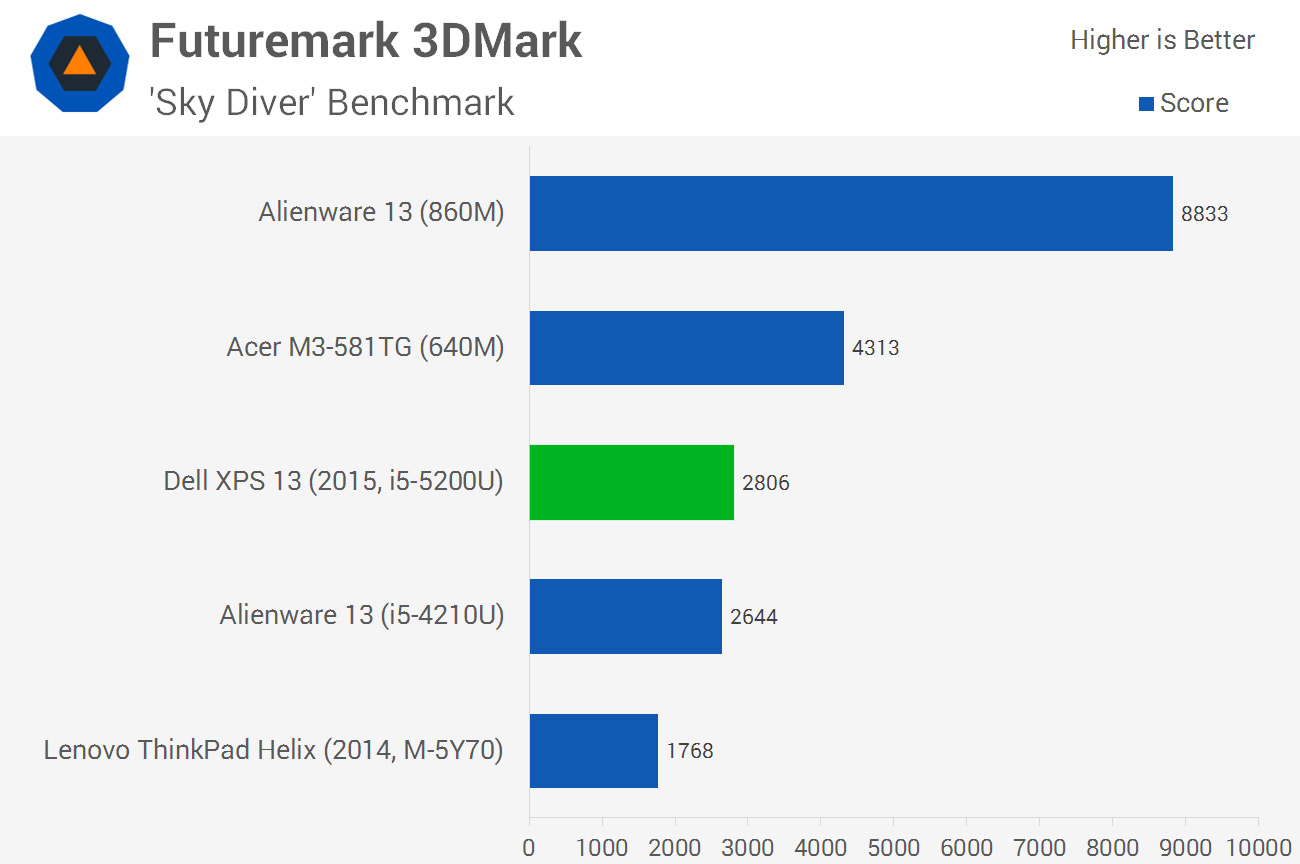
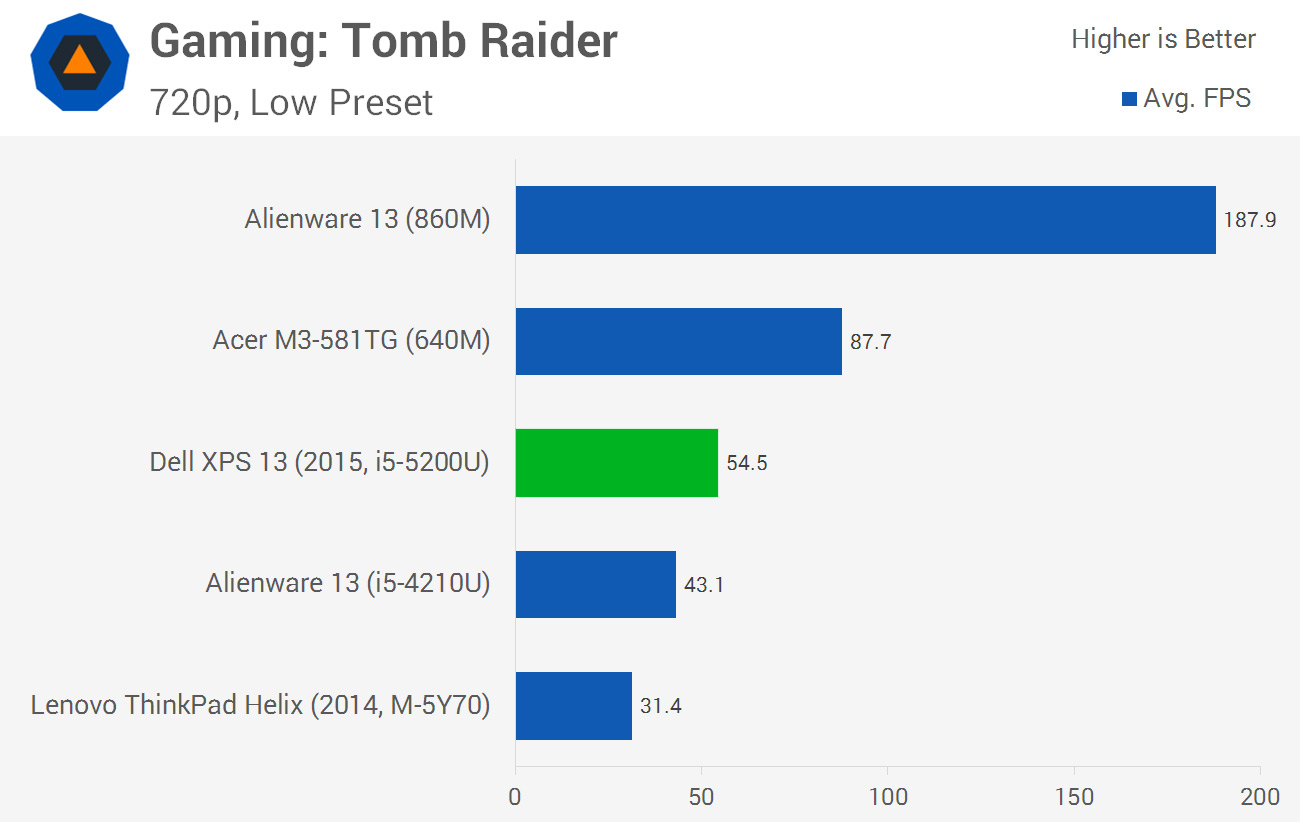
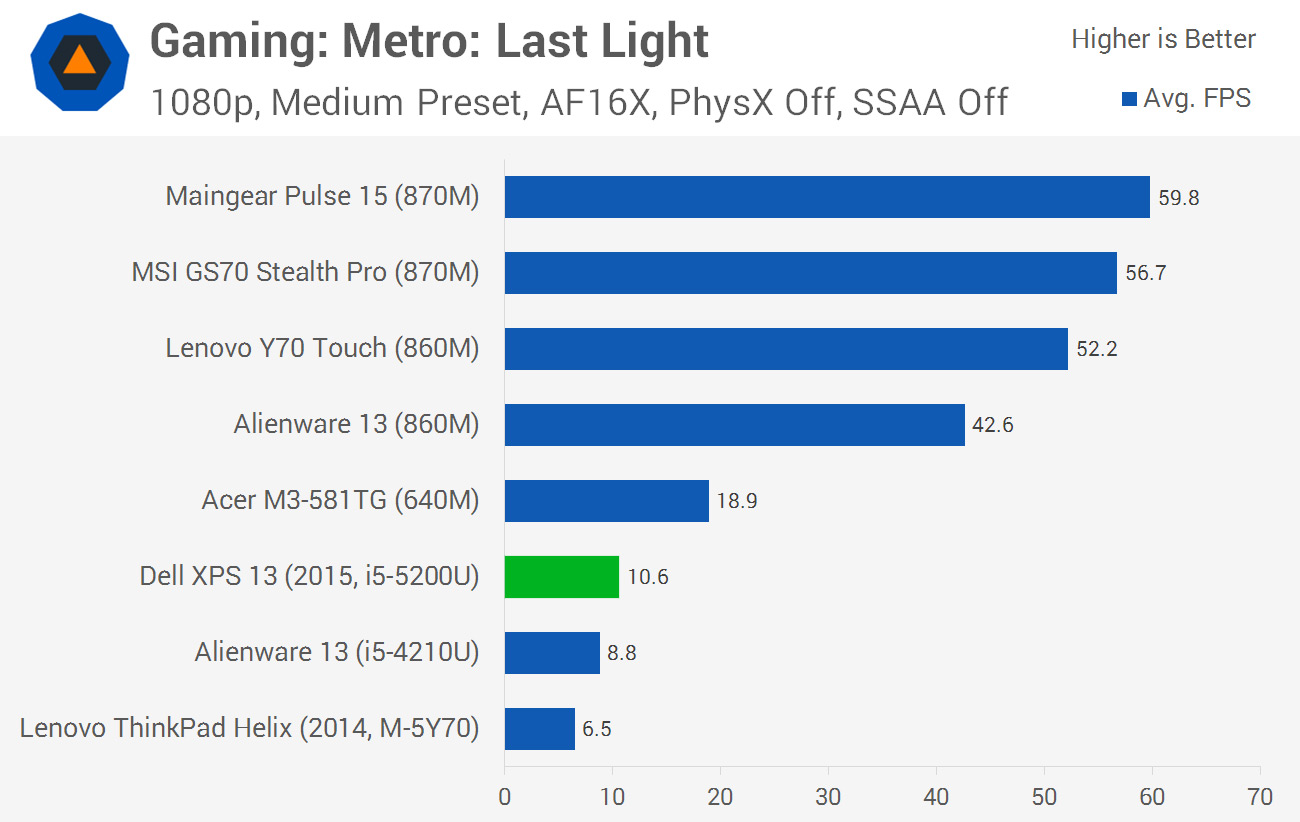
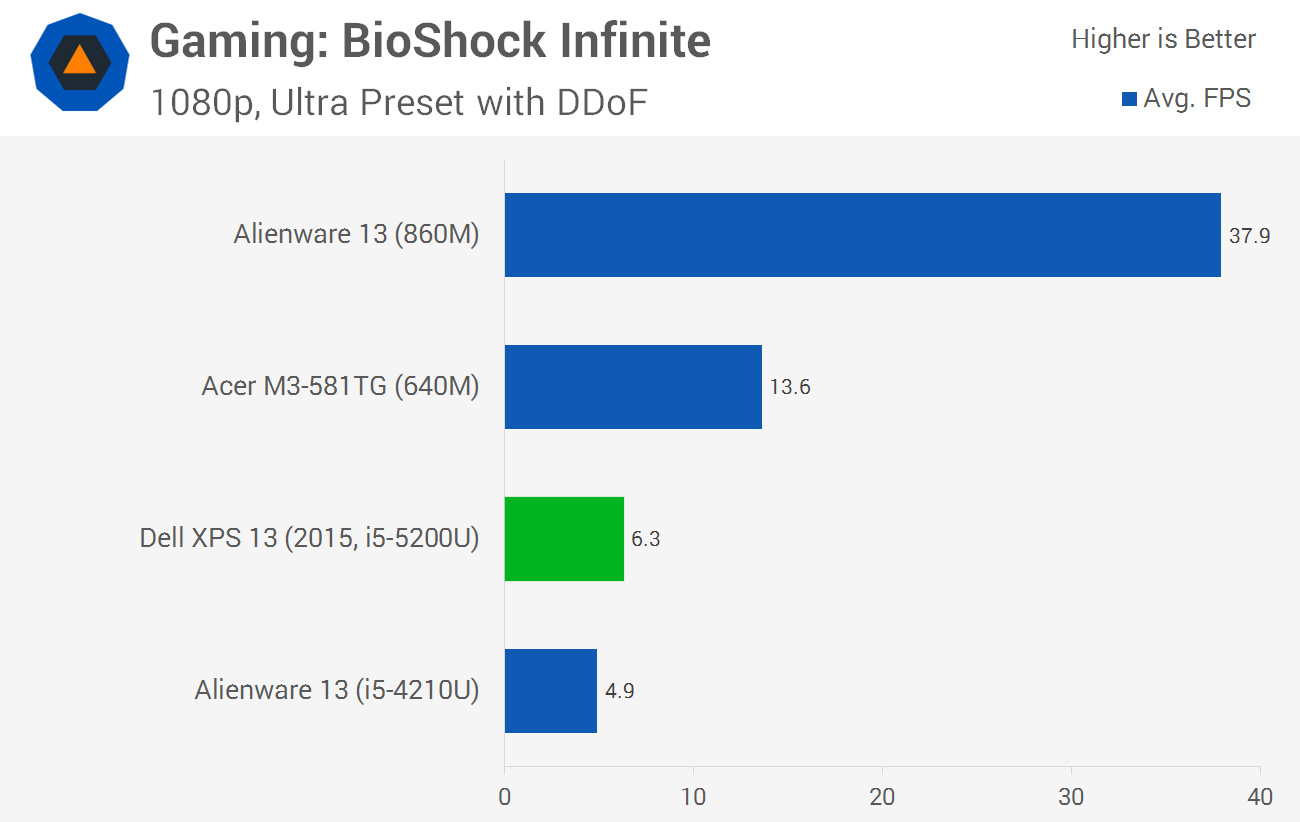
GPU performance is where we see much higher gains for Intel's 5th generation Core processors over the previous generation. On average the i5-5200U is 20% faster in the graphics department, a very good result for Broadwell. This corresponds pretty neatly to the increase in the GPU's execution units (20%), but as there was also a 10% decrease in clock speeds across those execution units, slight improvements to architecture and CPU performance played their part.
Compared to the M-5Y70 with its HD 5300 graphics, the HD 5500 GPU in the i5-5200U is a whopping 64% faster. You can clearly see from this result what the increased TDP in the Core i5 chip has facilitated.
Despite a decent increase in integrated graphics performance, the HD 5500 still falls significantly behind dedicated mobile GPUs. While this is Intel's second lowest Broadwell-class GPU in terms of performance, it gets annihilated by Nvidia's mid-range 860M, and comfortably beaten by the three-year-old entry-level 640M. It'll be interesting to see how the new Iris integrated GPUs in the higher-end Broadwell SKUs compare, as they should be significantly more powerful.
Still, the HD 5500 GPU is powerful enough for playing some of today's most popular games, such as League of Legends and Dota 2, at the XPS 13's native display resolution. It's also good enough for playing more intense PC titles at low to medium settings at 1080p, though don't expect it to be a gaming laptop by any stretch.
Below I've included NAND performance results for the Dell XPS 13, and as you can see they top the charts. No complaints here in the storage department.
